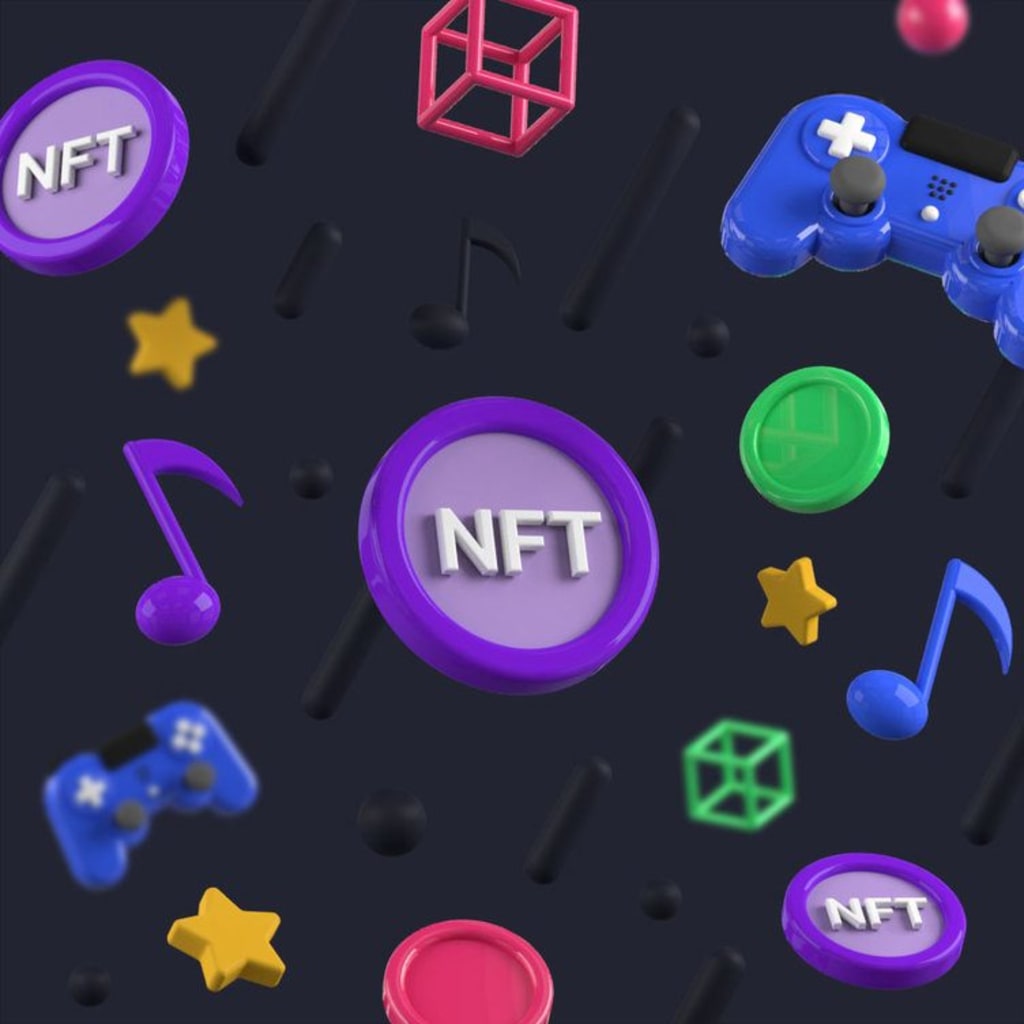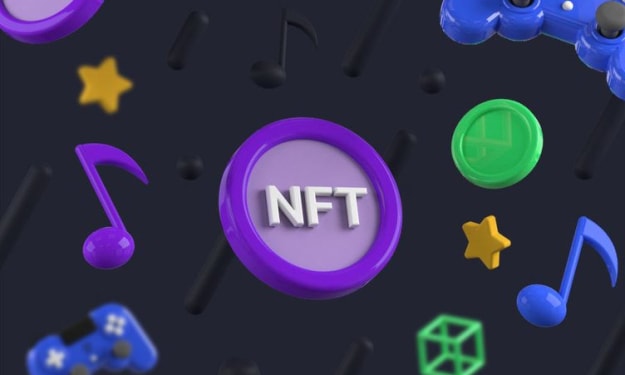The Evolution of Digital Art and Collectibles: A Look at the History of NFTs in the Art Market
How Blockchain Technology is Revolutionizing the Way We Buy and Sell Art

The art market has undergone a dramatic transformation in recent years with the rise of Non-Fungible Tokens (NFTs). NFTs are unique digital assets that are stored on the blockchain, enabling artists to authenticate and monetize their work in ways that were previously impossible. In this article, we will explore the history of NFTs and how they have impacted the art market.
The origins of NFTs can be traced back to the early 2010s when artists began experimenting with digital art and exploring new ways to sell their work. One of the earliest examples of digital art sold as an NFT was Kevin McCoy's "Quantum" in 2014, which was auctioned off for 1,000 Bitcoins (approximately $500,000 at the time). However, it wasn't until the release of CryptoKitties in 2017 that NFTs gained mainstream attention. CryptoKitties were digital collectibles that could be bought, sold, and traded on the blockchain, and they quickly became a sensation.
The art world took notice of NFTs in 2018 when the artist Beeple sold his artwork for $69 million at Christie's auction house. This sale marked a turning point for NFTs and demonstrated their potential as a new form of digital art that could be valued and sold in the same way as physical art. Since then, NFTs have exploded in popularity, and artists, musicians, and even athletes are jumping on board.
One of the main advantages of NFTs is that they allow artists to monetize their digital creations in a way that was previously impossible. For example, a musician can sell an NFT that grants the buyer exclusive rights to a song, or a video game developer can sell an NFT that unlocks a special in-game item. This has opened up new revenue streams for artists and creators, which is especially important in an era where traditional sources of income, such as live performances, have been disrupted.
NFTs have also opened up new opportunities for collectors to invest in art. With traditional art, it can be difficult to verify the authenticity of a piece or track its ownership history. However, with NFTs, each artwork is uniquely identifiable and recorded on the blockchain, providing a clear record of ownership and provenance. This transparency has made it easier for collectors to buy and sell art with confidence.
While the potential of NFTs is enormous, there are also concerns about their impact on the art market. Some critics argue that the hype around NFTs is simply a speculative bubble that will eventually burst. Others worry that the rise of NFTs will further widen the gap between established artists and emerging artists. Nevertheless, it is clear that NFTs have opened up new possibilities for artists and collectors alike, and their impact on the art world is only beginning to be felt.
One of the most interesting aspects of NFTs is the way they challenge traditional notions of ownership and value. In the past, the value of art was largely determined by its physical characteristics, such as the quality of the canvas, the brushstrokes, and the colors used. With NFTs, however, the focus is on the digital code that creates the artwork. This means that the value of an NFT is not tied to its physical characteristics, but rather to its unique digital signature. This has led to some fascinating debates about the nature of art and the role of technology in the creative process.
One of the key benefits of NFTs is that they allow artists to retain ownership and control over their work. In the traditional art market, artists often have little control over the use and distribution of their work once it has been sold. With NFTs, however, artists can sell their work while still retaining ownership of the original digital file. This means that they can continue to profit from their work even as it is bought and sold by collectors.
Another advantage of NFTs is that they provide a new way for artists to connect with their fans and build a community around their work. By selling NFTs, artists can offer exclusive access to their work and create a sense of exclusivity and value for their fans. This has already been seen in the music industry, where artists like Grimes and Deadmau5 have sold NFTs that offer access to exclusive content and experiences.
While NFTs are often associated with digital art, they have also been used to monetize physical art. For example, an artist can create a unique digital representation of a physical painting or sculpture and sell it as an NFT. This allows collectors to own a digital version of the artwork and provides a way for the artist to monetize their work beyond the initial sale.
Despite the benefits of NFTs, there are also challenges to their adoption in the art world. One of the main issues is the complexity of the technology behind NFTs. While the process of creating and selling NFTs has become more streamlined, it still requires a certain level of technical knowledge and understanding. This can be a barrier for artists and collectors who are not familiar with blockchain technology.
Another challenge is the environmental impact of NFTs. The process of creating and selling NFTs requires a significant amount of energy and has been criticized for contributing to the carbon footprint of the art world. However, there are efforts underway to address this issue, including the use of more sustainable blockchain technologies.
In conclusion, the rise of NFTs has brought about a new era in the art market, enabling artists to authenticate and monetize their work in ways that were previously impossible. While there are concerns about their impact on the art world, the potential of NFTs to connect artists with fans and collectors, and create new revenue streams, cannot be denied. As the technology continues to evolve, it will be exciting to see how it shapes the future of art and the way we think about ownership and value.
About the Creator
Balla Adorján
As a writer, I understand the importance of tailoring my writing style to suit the needs of the specific project, whether that be a formal academic article or a fun and lighthearted blog post.
Enjoyed the story? Support the Creator.
Subscribe for free to receive all their stories in your feed. You could also pledge your support or give them a one-off tip, letting them know you appreciate their work.






Comments
There are no comments for this story
Be the first to respond and start the conversation.